How "Leo Pleven" gave the Russian army a bloody lesson
The offensive of the Western detachment under the leadership of N. P. Kridener took place in difficult conditions. The first serious obstacle was the Turkish fortress Nikopol. located on the bank of the Danube at the confluence of the Osma and the Olta rivers. From the north, the city was covered by the Danube, from the west - Osma, from the east - Yermaliysky creek, from the south - a series of heights. The Turkish garrison numbered about 8 thousand people with 113 guns. The commandant of Nikopol, who decided to act actively, placed his main forces in the trenches, opened in front of the fortress walls. The 9 Russian Corps had two infantry divisions, three cavalry regiments, a Caucasian Cossack brigade, and 92 field guns. Also, for the siege of Nikopol, 30 field and 33 siege weapons were also identified.
From June 26-27 heavy siege artillery guns began to fire on Nikopol from the north bank of the Danube and caused great damage to the fortifications of the fortress. The fire was waged not only during the day, but also at night, as a result of which the enemy was not able at night to correct the destruction that was done by artillery during the day. During the assault itself, siege artillery from the other side of the Danube inflicted terrible destruction and fortresses, and the city. The fire started in the city.
The commander of the 9 Army Corps, General Nikolai Kridener decided to deliver the main attack from the south and the auxiliary from the south-west. Russian troops were able to secretly reach Nikopol and 3 (15) in July. 1877 of the year suddenly attacked the Turks. The greatest successes were achieved in the western direction, where the Vologda and Kozlovsky regiments advanced. This made it possible in the 14 watch to go on the offensive units acting on the direction of the main attack. At the cost of large losses, with the help of reserves, the fourth attack Russian soldiers took redoubt located to the south-east of the city. By evening, the Turkish troops were driven out of field positions and retreated into the fortress. A large role was played by the Russian artillery, which almost completely crushed enemy batteries. With the darkness of the battle over, our troops began to prepare for the storming of Nikopol. Artillery continued to fire, not giving the enemy the opportunity to restore the destroyed fortifications. By morning, the Russian troops were ready to storm. However, the Turkish command decided that further resistance does not make sense and capitulated. Russian troops took 6 banners, 113 serfs and field guns, 2 mortars, 10 thousand rifles, a large amount of ammunition, cold weapons and food.
Russian troops lost killed and wounded 41 officer and 1119 soldiers and sergeants. Turkish losses amounted to about 1 thousand people killed and 7 thousand prisoners, among whom were the 2 general and 105 officers. Successful actions of the Russian artillery and the initiative of junior and mid-level officers ensured the victory. The highest command made a number of mistakes. Thus, the assault plan was completely unsuccessful and militarily illiterate. The terrain and location of the Turkish fortifications dictated the need for a main attack from the west, and an auxiliary attack from the south. The assault plan adopted by Criedener outlined the exact opposite directions of strikes.
Delivery of the fortress Nikopol 4 July 1877 of the year. N. D. Dmitriev-Orenburg
Marsh Corps Osman
The capture of Nikopol expanded the bridgehead of the Russian army on the right bank of the Danube and partially solved the task of providing the right wing of the Danube army. The Turks had on this flank another strong stronghold and communications center - Pleven. Initially, there were no serious enemy forces. In Plevna, 26 of June (8 of July) was visited by the Cossacks from the Gurko squadron. From Nikopol to Pleven there was only 40 km. That is, it was possible to quickly march to occupy a strategic fortress, which did not yet have a strong garrison and was not prepared for defense.
But soon the situation did not change in favor of the Russian army. Mushir (Marshal) Osman Pasha, who commanded in Vidin, suggested that Commander-in-Chief Abdul-Kerim Pasha change the initial plan of military operations, which was concentrated on the flanks of the defense line of the Danube - in the quadrilateral of fortresses and near Vidin. He proposed leaving the garrison in Vidin, with the rest of the troops, to move to Pleven, then to unite in the area of Tarnovo with the Ahmet-Eyub-Pasha corps from Šumly and go on a decisive counterattack on Sistovo. With the concentric blows on the flanks, Osman Pasha hoped to break up and drive the Russian army back over the Danube. In the event that the last connection and counterattack failed, he planned to occupy Lovcha, which, according to Osman, represented great benefits for the defense of the Balkan passes. The Supreme Turkish command, frightened by the rapid fall of the Danube frontier, and fearing the Russians could break through to Constantinople, took extraordinary measures to rectify the situation. Therefore, the proposal Osman with minor changes accepted.
It is worth noting that Osman Nuri Pasha was an experienced commander. In 1852, Osman graduated from the Ottoman Academy of the General Staff and entered the service in the cavalry. The first combat experience received during the Crimean War. He participated in the battle of Evpatoria in February 1855, and then in the campaign in Abkhazia and Megrelia. Then he took part in the suppression of the Druze uprisings in Syria, the Greeks on Crete. In 1868-1871 served in Yemen, from where he returned with the title of pasha. Then he was appointed military commander of the area in Bosnia. Showing himself a talented officer, Osman was transferred to the General Staff with the rank of colonel. In 1874, he was promoted to brigadier general, and in 1875, to divisional. In 1876, he was appointed to command a corps in the Vidin region, operating against the Serbs. He distinguished himself in the war against Serbia and Montenegro, although he was defeated by the Montenegrins. For successful actions was produced in marshals. After the defense of Pleven, Osman Pasha received the honorary nickname "Gazi" (victorious), and was awarded the Order of Osmaniye for the outstanding service of the Turkish Empire. After returning from captivity, he received from Sultan Abdul-Hamid II the honorary nickname "Leo Pleven" and was repeatedly appointed Minister of War of Turkey. Thus, the Russian army was opposed, apparently, by the best of the Turkish commanders, who stood out sharply from among the passive and sluggish Turkish generals. He had a higher military education, a great combat experience. His army consisted of the best battalions who had combat experience of war with Serbia.
In the morning of July 1 (13) Osman Pasha made a tour of Vidin with 16 thousand people and 58 guns. On the way, Osman Pasha received a message about the critical situation of Nikopol, and so instead of Lovcha, he moved to Pleven. At dawn 7 (19) July, Turkish troops entered Pleven, passing a forced march in 6 days about 200 kilometers. Thus, Pleven received a decisive commander and a powerful garrison, which began to energetically prepare for defense. Panic moods were replaced by vigorous activity. Turkish equestrian intelligence found the Russian detachment on the same day. Osman Pasha, despite the extreme fatigue of his troops, who had just completed a forced march, led them from Pleven to the surrounding hills and positioned them on positions. Before the Pleven front to the northeast between the settlements of Bukulek and Grivitsa they dug trenches. The construction of redoubts began. The main forces - nine battalions with five batteries - took up positions in height Yanyk-Bair with the front to the north; three battalions with a battery at the same height stood front to the east, to Grivitsa; two battalions with a battery located at a height east of Opants; one battalion with three guns took a position south of Pleven to cover the Lovchinsky direction. The remaining troops made up the general reserve and became east of Pleven.
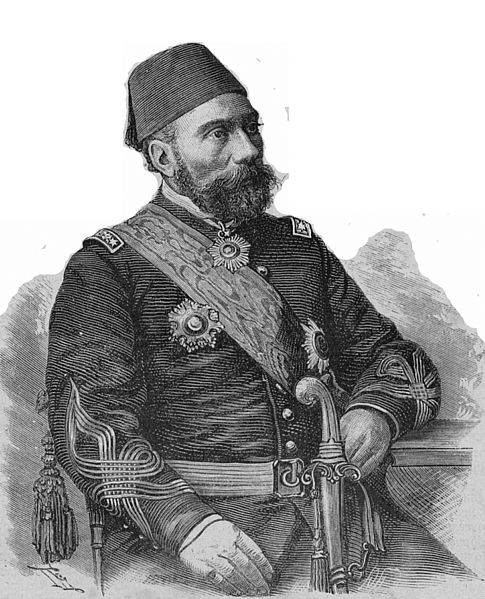
Osman Nuri-Pasha (1832-1900)
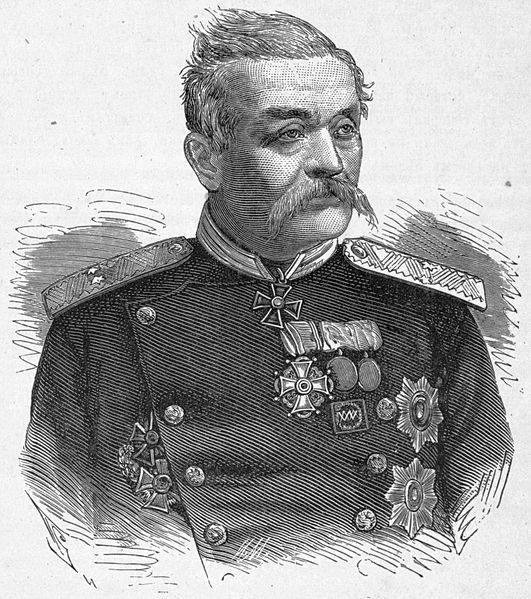
Baron Nikolai Kridener (1811-1891). Figure by P. F. Borel, engraving by I. Matyushina, 1878
The first storm of Pleven
In the meantime, the Russian command, after the capture of Nikopol, did not organize an immediate throw of troops at Pleven, which led to serious problems and a breakdown in the rate of advance not only of the Western detachment, but of the entire army. For two days, General Kridener was inactive. The Russians, neglecting troop reconnaissance, could not detect the movement of Osman Pasha’s troops. 4 (16) Creedener was instructed to occupy Pleven, but he did not respond. This greatly facilitated the maneuver of Osman Pasha, led to the strengthening of Pleven. Only 6 (18) July 1877, after the categorical order of the commander in chief, Russian troops resumed movement. At the same time, in the event of his unavailability to perform in Pleven with the whole detachment, Criedener was allowed to confine himself to sending only the Cossack brigade of Tutolmin and part of the infantry there.
As a result, the 1 th brigade of the 5 th infantry division, the 19 th Kostroma regiment, the Caucasian brigade, the 9 th Don Cossack and the 9 th Bug Uhlansky regiment were advanced to Pleven. In total, the Russians in these troops had up to 9 thousands of people with 46 guns. General management was assigned to Lieutenant-General Yu. I. Schilder-Schuldner. Thus, they made the second fatal mistake - they sent only part of the forces of the Western detachment to the Turkish fortress, which was caused by an underestimation of the enemy, the first successes relaxed the Russian command, many believed that the Turks were already disorganized and would not be able to offer serious resistance in Pleven. It was necessary to go to Pleven with forces at least equal to Osman Pasha’s corps. As a result, the Russian troops attacked Plevna almost half as much as the enemy in manpower.
The Russian detachment went to Plevna without intelligence, without escort, despite the presence of cavalry. Therefore, the location of the enemy Schilder-Schuldner did not know. Near 14.30 7 (19) in July, our troops, approaching Bukovlek, were suddenly fired upon by Turkish artillery. After the first minutes of confusion, the Russians quickly came to their senses. The regiments turned around, the batteries became in position, an artillery duel began, which stopped only in the evening. Schilder-Schuldner made another mistake: he did not use the time available for detailed reconnaissance of the area and the forces of the enemy. The location of the enemy was known only in general terms, as well as its number - about 20 thousand people. Although this should have been enough, so as not to try to attack on the move, in the forehead of the enemy position. Opponent underestimated.
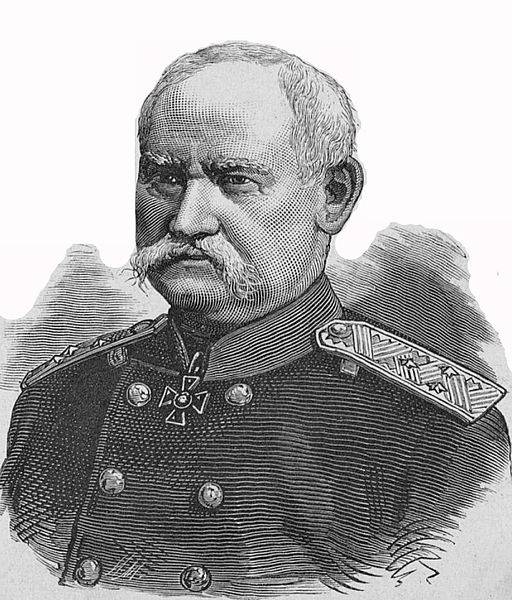
Lieutenant-General Yu. I. Schilder-Schuldner, 1877 Year
It was decided by the main forces (1-I Brigade) to advance on Plevna from the north to the center and the left flank of the main position of the Turkish troops. From the east, on the left flank of the Turkish army, the 19 th Kostroma regiment attacked, supported by the 5 th artillery brigade attached to it by the 31 th battery. The Caucasian brigade was assigned to go to the flank and rear of the enemy position from the south. The 9 Don Cossack Regiment was tasked with covering the right flank from Opants.
Source: Bloodless L. Atlas of maps and schemes for the Russian military stories
The assault on the enemy’s positions began in the morning of July 20, almost without artillery preparation. Five battalions were thrown at once into the attack. Turning under a strong Turkish rifle fire to a ravine near Bukovlek, the Arkhangelsk and Vologda residents promptly rushed to the attack and reached the batteries on the ridge of Yanyk-Bair. At the extreme right, some attacking units even broke into Pleven and started a street fight there. At the same time attacking units suffered serious losses. The Turks also threw fresh reinforcements and reserves into battle. And our troops practically did not have a reserve. Until 11.30, the troops of the right column were held in the Turkish positions they occupied, reflecting the fresh Turkish reserves' counterattacks, but it became clear that their continued presence there was aimless and could soon lead to defeat. By order of Schilder-Schuldner, the 1-I brigade began to withdraw. Turkish troops did not pursue her. Thus, the advance of the main forces from the north initially developed successfully, but was soon stopped by the approaching Turkish reserves.
The offensive of the Kostroma regiment developed in a similar way. The Kostroma regiment, which the artillerymen skillfully supported, took the Turkish positions from Grivitsa. The Turks panicked, Osman Pasha himself intervened, calming the troops. But our soldiers could not get through further because of a lack of strength. The losses were high, the regiment commander died, ammunition ended. And the Kostroma regiment retreated. The cavalry could not fulfill its task: Tutolmin with his Caucasian Cossack brigade was inactive. As a result, the squad leader ordered to stop the offensive. Russian losses reached 2,5 thousand people, the Turks - about 2 thousand soldiers.
Thus, the first assault on Plevna failed. The failure was caused by several reasons: the insignificance of the advancing Russian troops, moreover, scattered in different directions; there was no interaction between the northern and eastern groups; underestimation of the enemy; the lack of strong reserves to support the early successes of the advancing troops; the attacks of the Russian troops were reduced mainly to frontal attacks by infantry of Turkish fortified positions, and they could not use the cavalry for striking the flank and rear of the enemy.
Before the attack. Under Plevna, 1881. Vereshchagin V.
Second storm
18 (30) July 1877, the Russian command prepared the second storming of Plevna. This time they attacked with more powerful forces - 26 thousand people with 140 guns. The number of Turkish troops was 22 thousand people with 58 guns. That is, the Turkish troops are not much inferior to the Russian in number. At the same time, the Turks defended themselves in a vantage point, which at the time of the second assault was significantly strengthened. The fortifications at Bukovlek were defended by Plevna from the north, at Grivitsa - from the east. The weakest sections of the Turkish defense were southern and western.
According to the plan of the Russian command, the main forces of the Western detachment were divided into two groups - right and left. The troops of the right group under the command of Lieutenant-General N. N. Velyaminova were to deliver the main attack, advancing from the east in the direction of Grivits, Pleven. Under the command of Lieutenant-General A. I. Shakhovsky, the forces of the left group were tasked to advance from the southeast to Radishchevo and further to Pleven. From the north, the strike force of the Russian troops was covered by a detachment of Major General P. S. Loshkarev, from the south by a detachment of M. D. Skobelev. In the general reserve was an infantry brigade with three batteries. On the eve of the assault, 17 (29) in July, Kridener instructed the unit commanders on the methods of combat. He recommended not to open the rifle fire from a long distance, to protect the cartridges to close distances, to go into bayonet attacks. The meeting participant, General K. K. Biskupsky, noted that "the plan for the upcoming assault was not only not developed and stated clearly and definitely, but even all the time, the creator of this plan was not clearly drawn to the Cridener himself." However, the disposition was approved. In a telegram from the commander-in-chief from 18 (28) in July, it was reported: "I plan for your attack, Plevno approve, but I demand that before the infantry attack the enemy position was heavily fired by artillery fire."
The attack on the main line was not developed. General Velyaminov’s troops came under heavy flank fire from enemy artillery. The “Note on the 2 th Battery Action of the 31 Artillery Brigade” noted: “When the troops entered the environment of the enemy’s artillery fire and the Turks fired several shots, it turned out that the direction of the battle line was wrong and the Turks fired at us in the flank; then the left shoulder was ordered to move forward slightly, and the right back, and the batteries, taking a position, opened fire on the enemy’s artillery, which was placed in a fairly strong earthen fortification, but open or closed — from this distance it was impossible to judge. After rebuilding, the Russian troops resumed their attacks after a short artillery attack, but all attempts to advance were repelled by fire from enemy fortifications.
Shakhovsky's troops occupied Radishchevo. The offensive was carried out under the cover of well-aimed Russian artillery fire, which made a big impression on the Turks. According to the testimony of a Turkish historian, the fire from the Radishchevo region was so strong that they "did not see the light of God and prayed to the Lord for help." But the results of successful artillery preparation were not fully utilized. There was no clear leadership of the troops, they did not set specific tasks. General orders were given. For example, one of them said: "Move right in front of you and beat along the way all the scum who will meet on the way." As a result, the stubborn battle lasted until 18 hours, but did not lead to victory.
The cavalry acted differently. The right-flank squad of General Loshkarev behaved passively practically during the whole battle. The left-flank squad Skobelev managed to seize the ridge of the Green Mountains and break through to the very outskirts of Pleven. But, suffering heavy losses and not receiving reinforcements, he was forced to withdraw. However, Skobelev's troops diverted the attention of the enemy and thus eased the position of the Shakhovsky detachment. With the onset of darkness the battle was over. Russian troops retreated across the front. The Turks did not pursue them. Osman Pasha believed that the next day the Russians would continue the offensive. He ordered to hastily restore the destroyed and build new fortifications.
Thus, the second storming of Plevna also failed. The losses of the Russian troops were high - 7 thousand people, Turkish - no more than 1,2 thousand people. The Turks fought back while being protected by strong fortifications, the Russians attacked in the forehead and suffered heavy casualties. Russian soldiers and officers bravely marched on the enemy, and paid a high price for the command miscalculations. Among the mistakes of the Russian command are the following: they decided to strike the main attack on Plevna from the east, where the Turks had the strongest fortifications, although the southern and western directions were the best option for a successful attack; the plan of operation was poorly prepared, common words without specifics; during the assault, they did not establish interaction between the branches of the military and separate parts of the battle formations; many commanders adhered to traditional, outdated views on the war, the troops went on the offensive in dense formations and suffered unjustifiably high losses. In addition, the Turks had already managed to prepare for defense, the moment when the fortress could be taken on the move was ineptly lost.
Many contemporaries, noting the fatal mistakes of the high command, at the same time, highly appreciated the courage and heroism of the Russian soldiers. Thus, a participant in the 18 (30) battle of July 1877 of the Year under the Pleven General K. K. Biskupsky noted: “We think that the high qualities of a Russian soldier and a Russian officer, who sometimes rescued their bosses, will take into consideration both the real Moltke and the future military talent in any European army. And we, the chiefs of this soldier, we need to bow before his great ... qualities and prepare ourselves in order to benefit from them, and not waste the life of a soldier without any purpose. "
Doctor S.P. Botkin said: “Let's hope for the Russian man, for his power, for his star in the future. Perhaps, he with his indestructible force will be able to get out of trouble, despite the strategists, commissaries and the like. After all, it is necessary to take a closer look at the Russian soldier in order to treat with malice those who do not know how to lead them. You see in him strength, and meaning, and humility. Any failure should go to shame on those who failed to use this power ... ". Botkin clearly saw the weakness of the Russian generals, among the generals there were too many careerists, administrators, performers who pretend well in peacetime, but fewer and fewer real combat commanders, resolute, strong-willed, capable of taking responsibility. This problem of the Russian command in all colors will manifest itself in future wars with Japan and Germany.
“The question is: who is to blame for all the failures?” Asked Botkin. And he answered: “The lack of culture, in my opinion, lies at the basis of everything that has unfolded before our eyes ... We must work, we must learn, we must have more knowledge, and then we will not have to get lessons either from the Ottomans or from the Suleimans.”
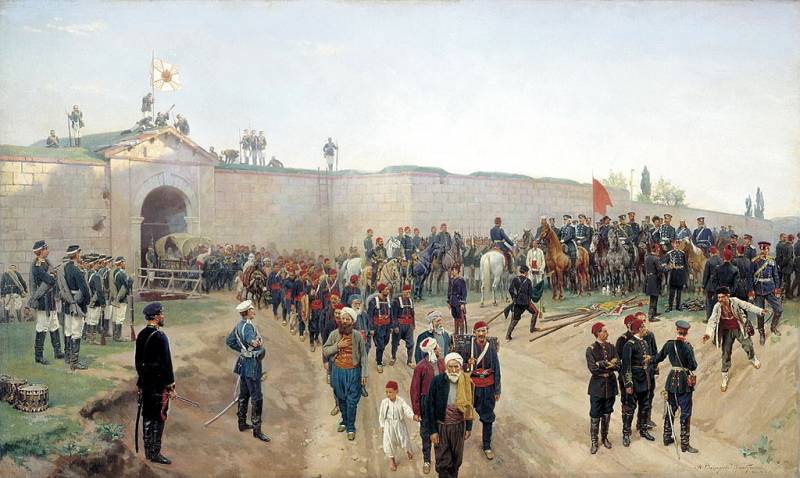
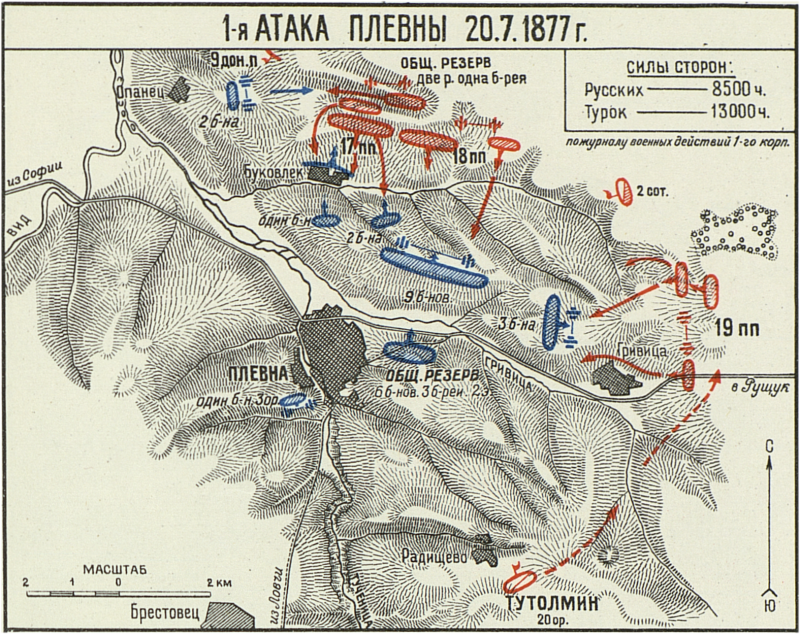
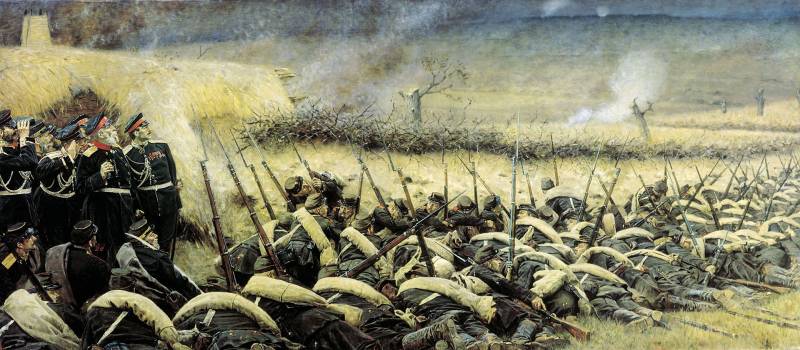
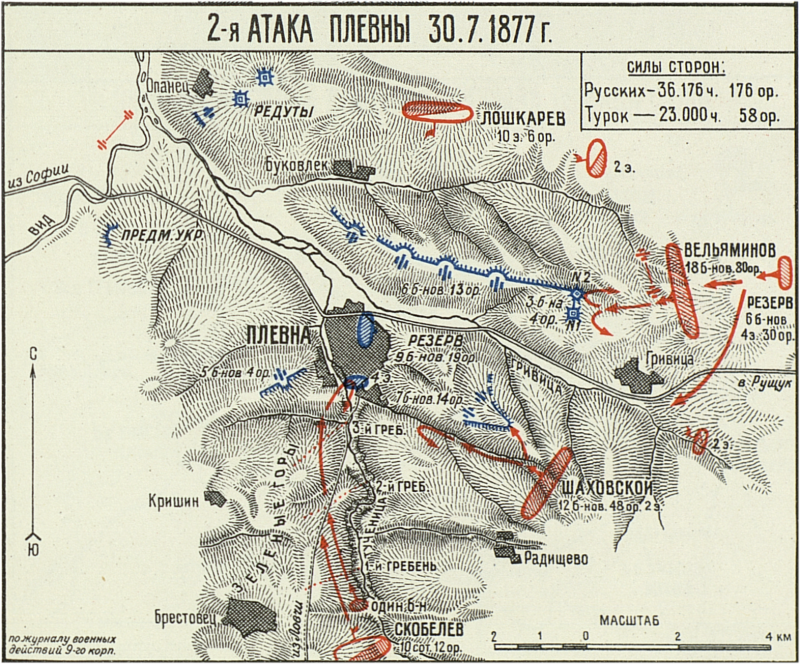
Information